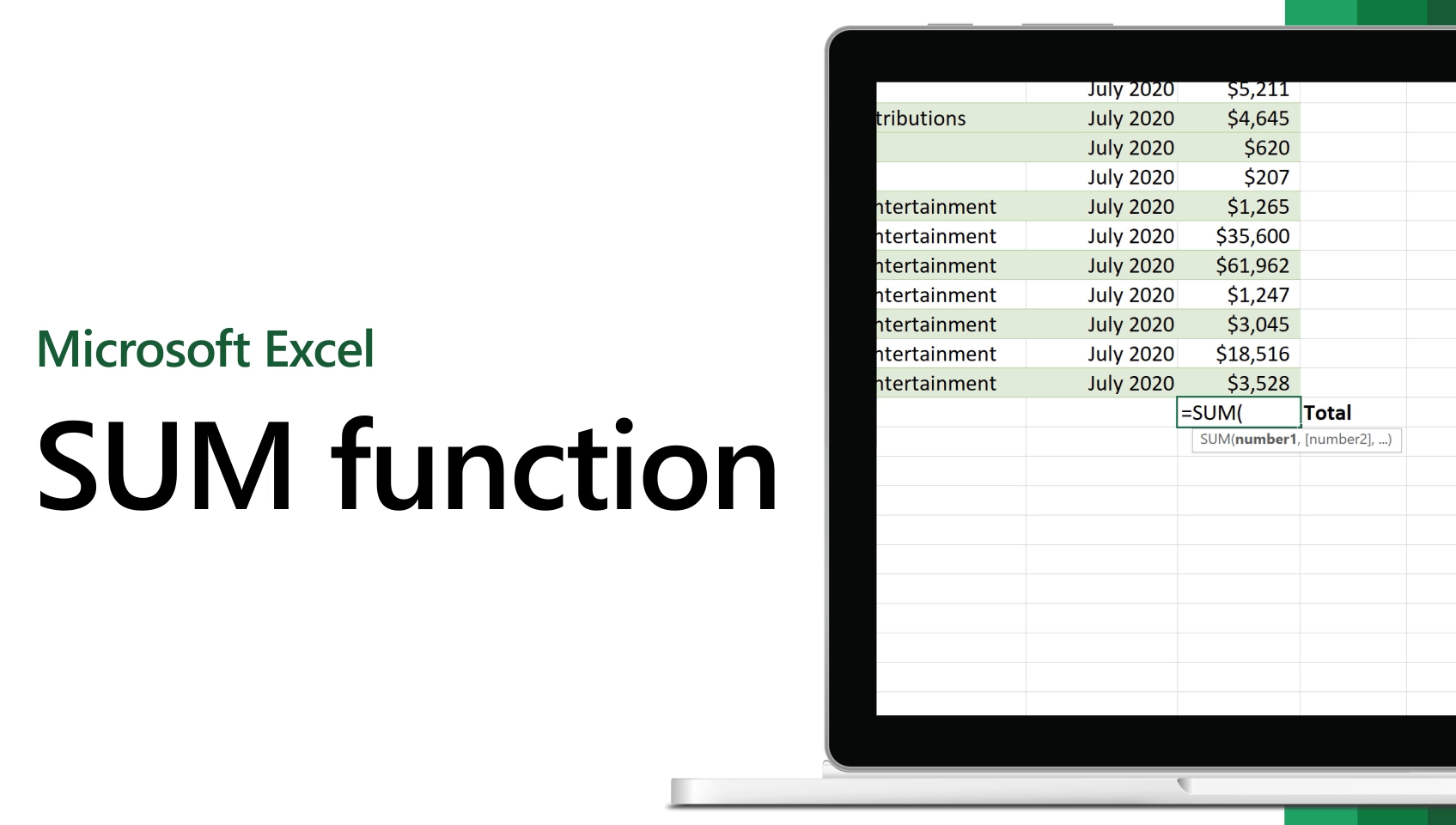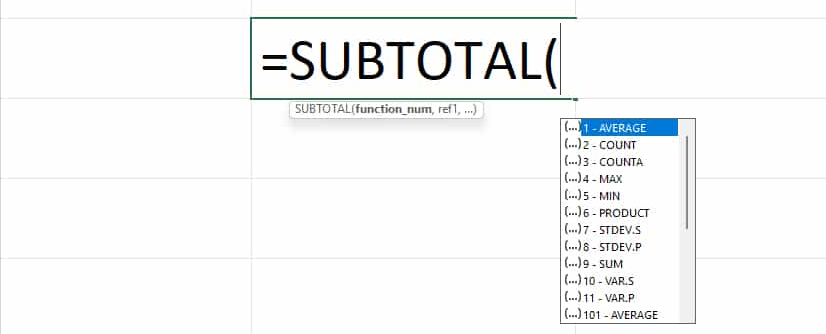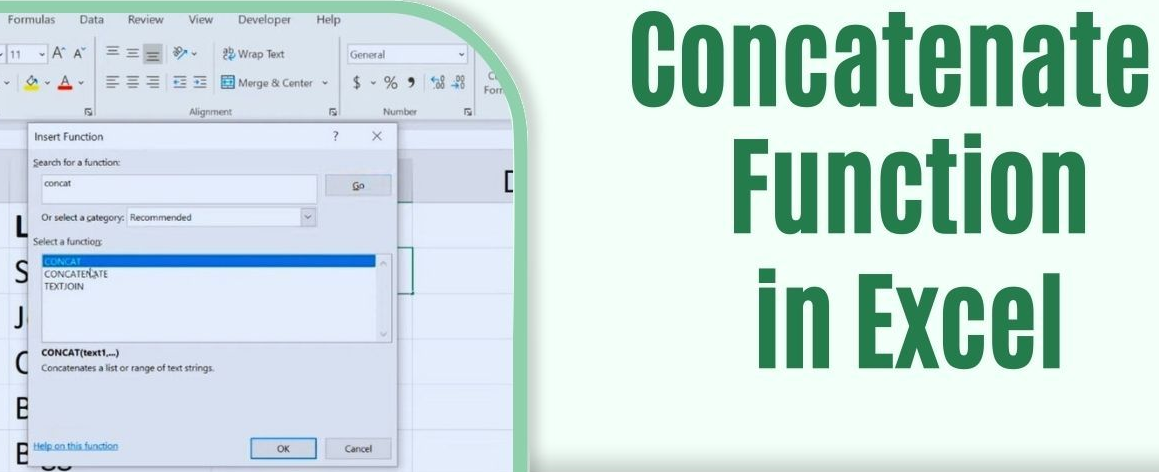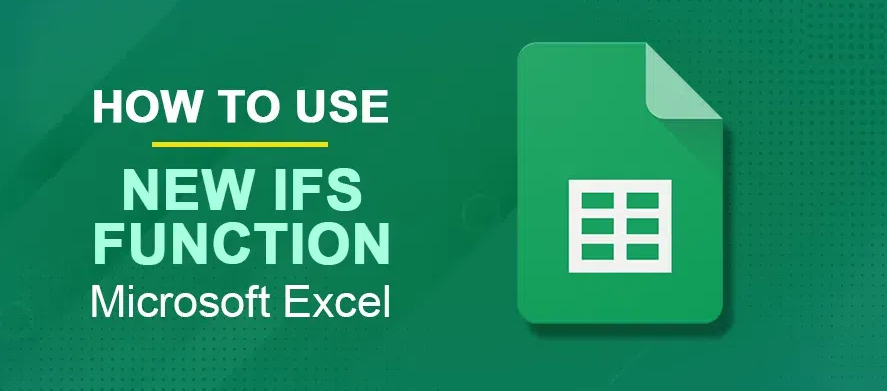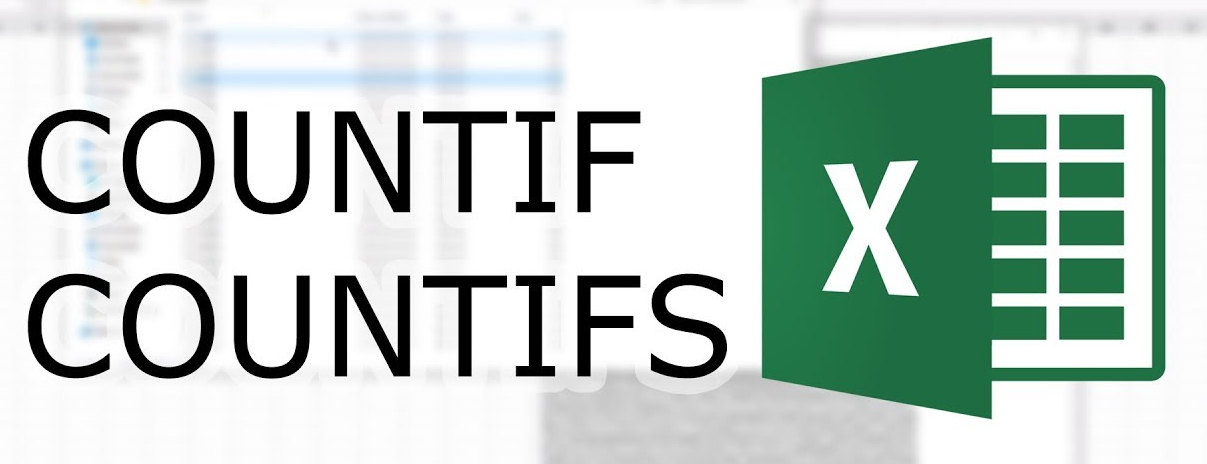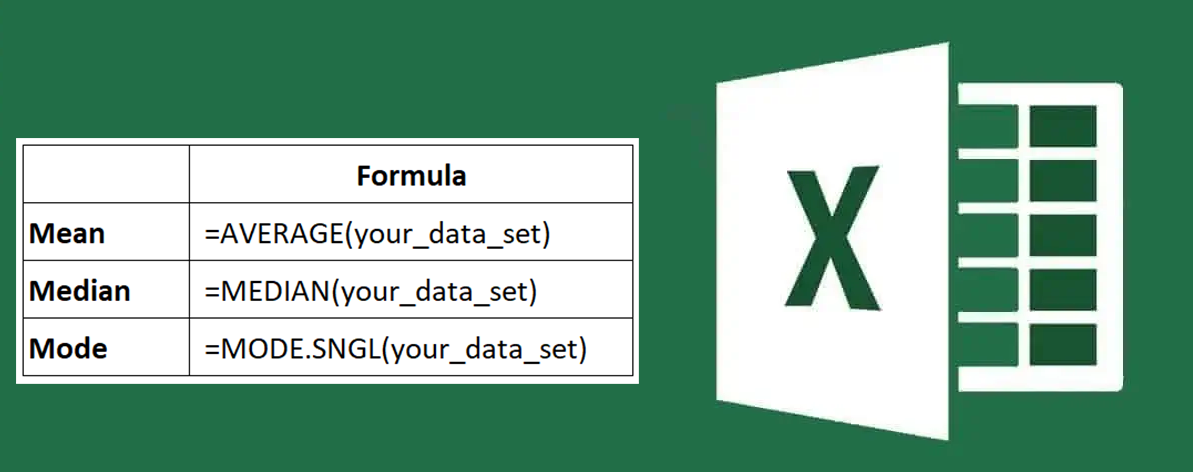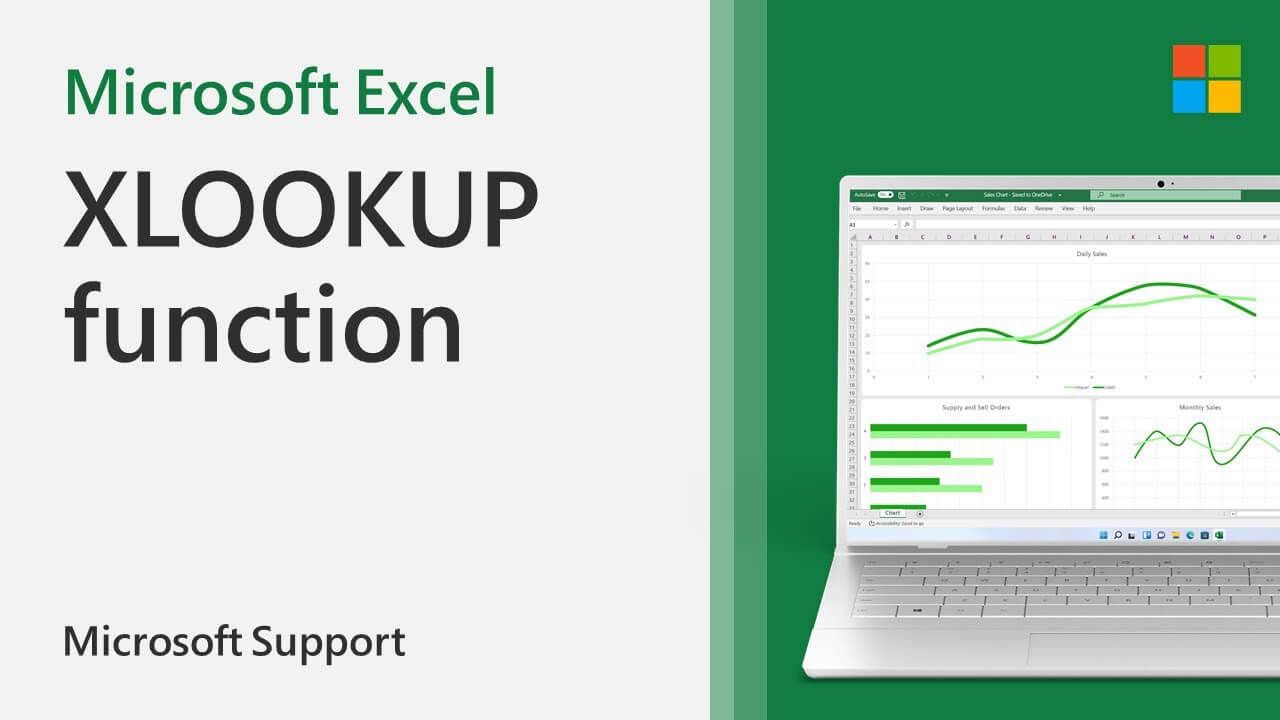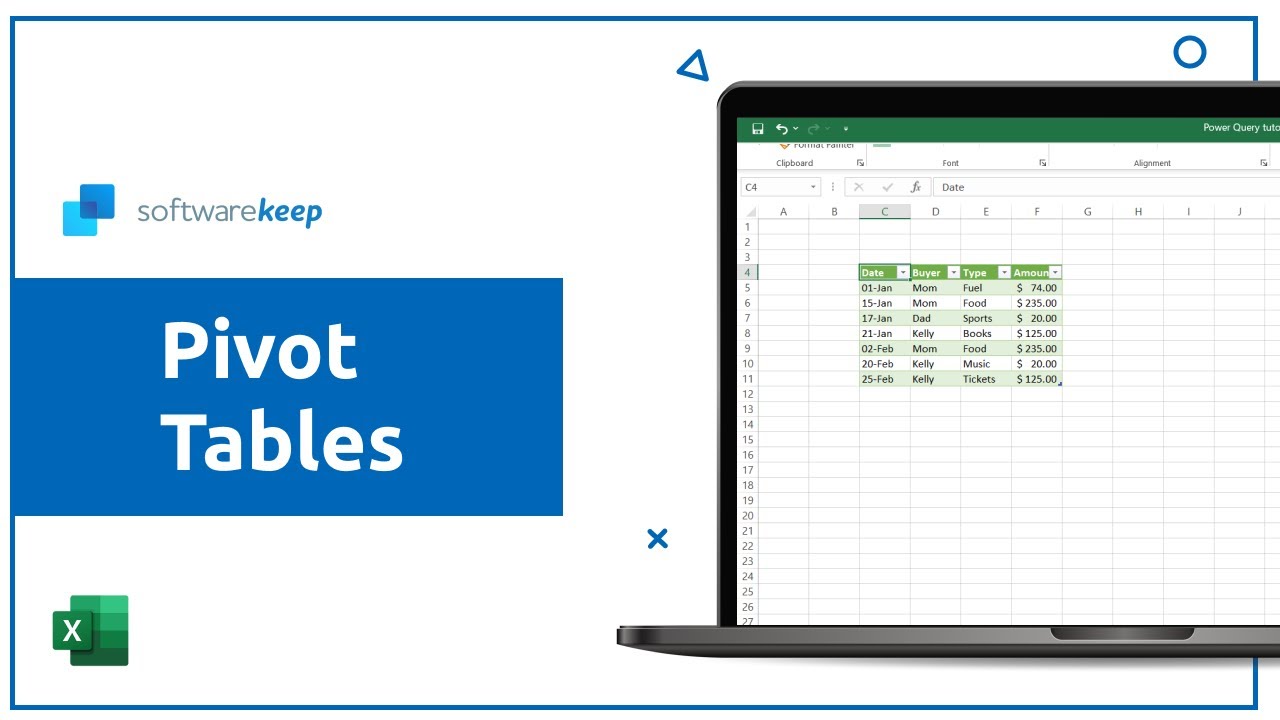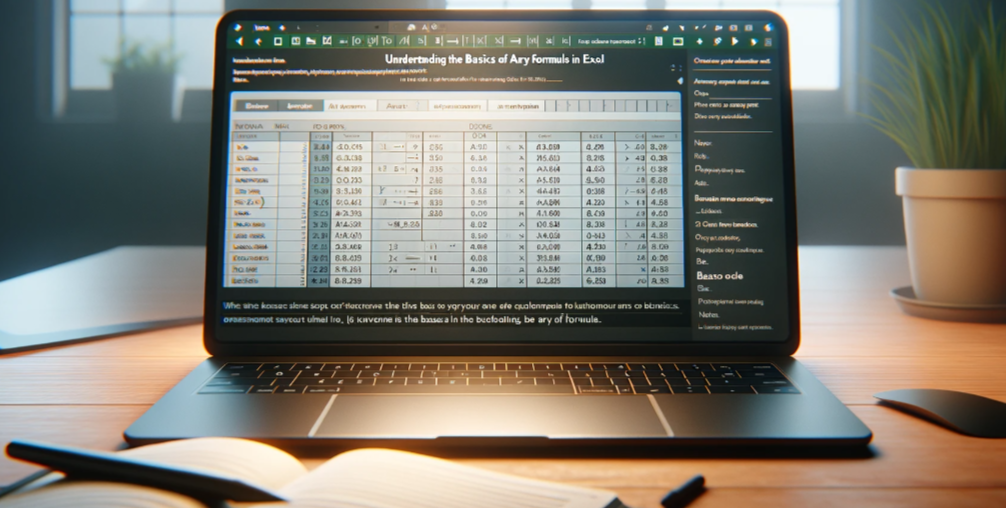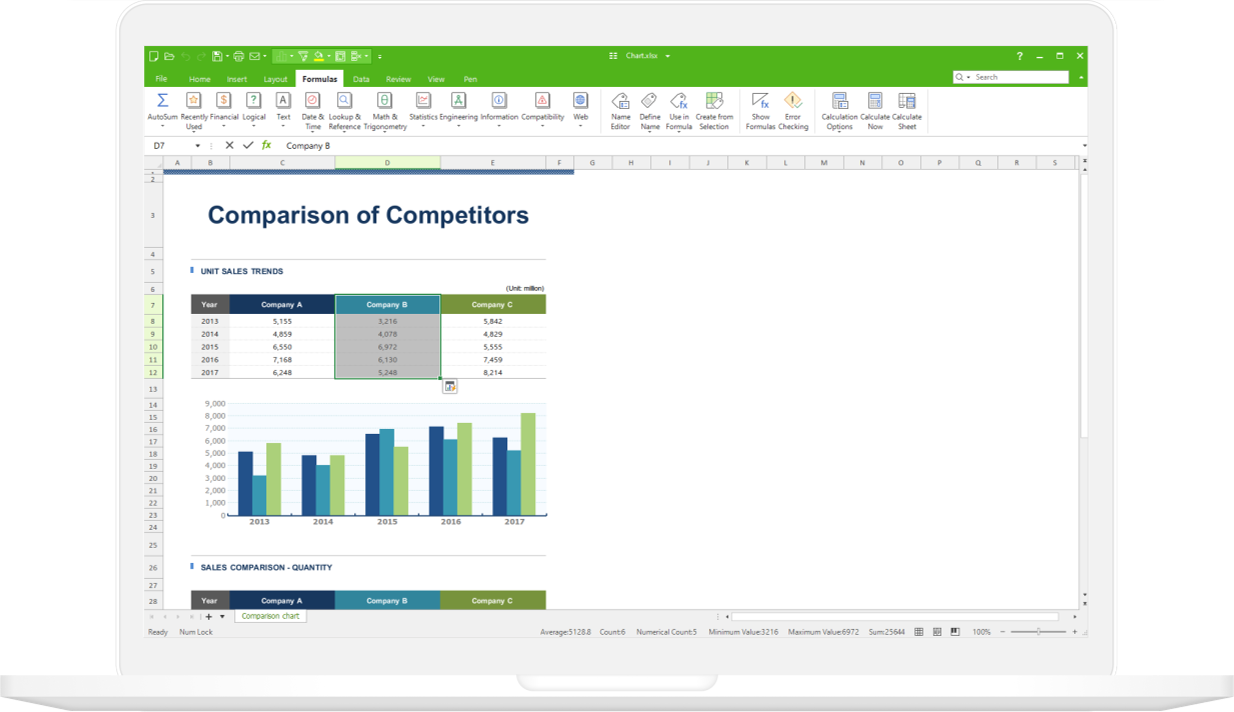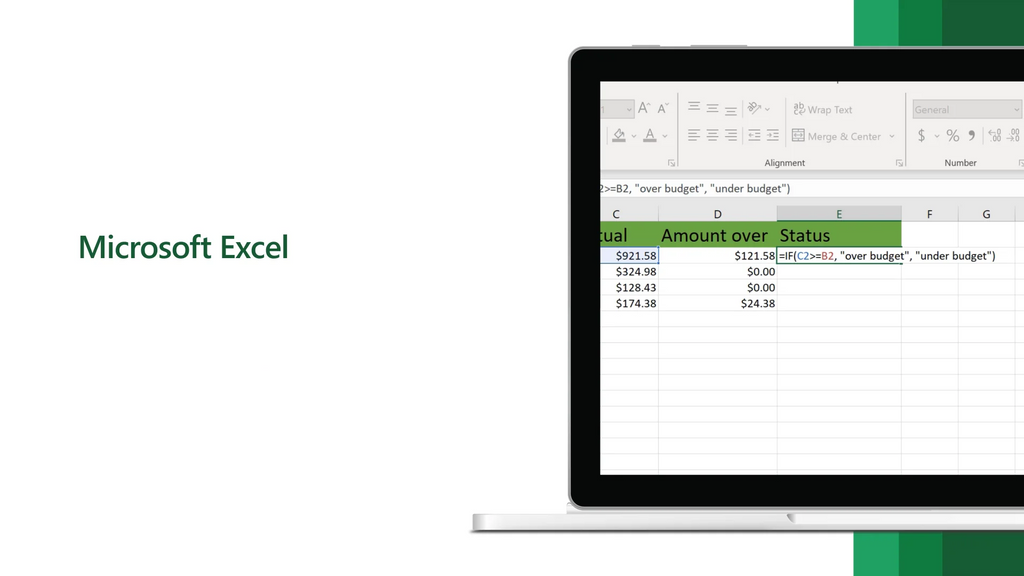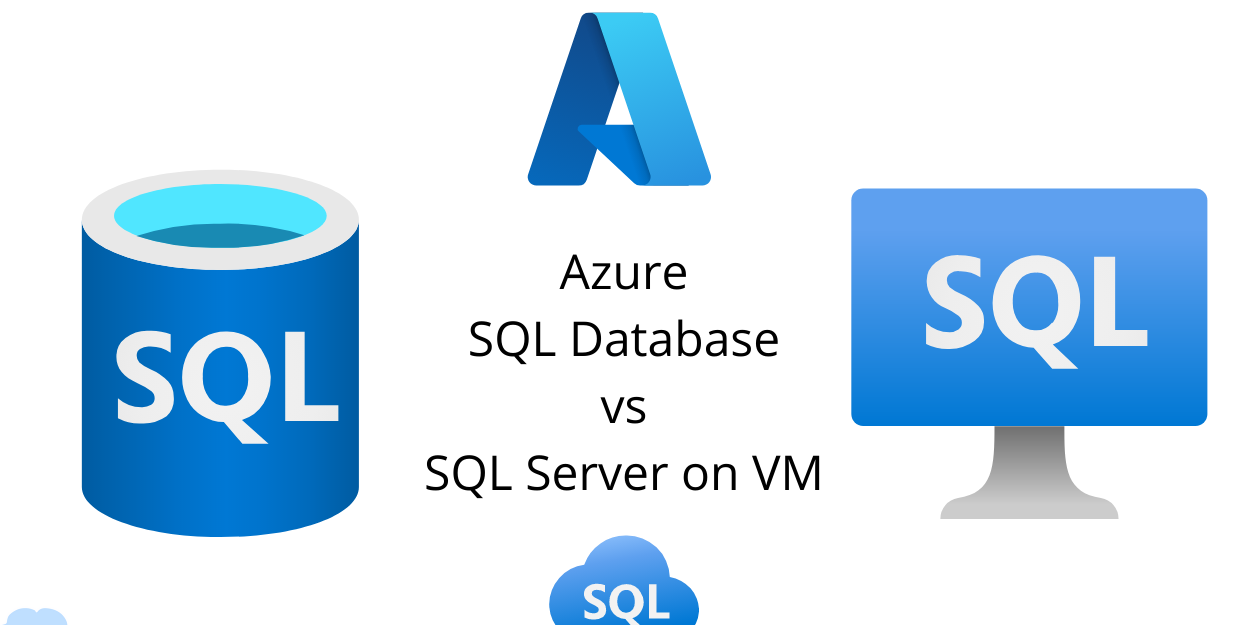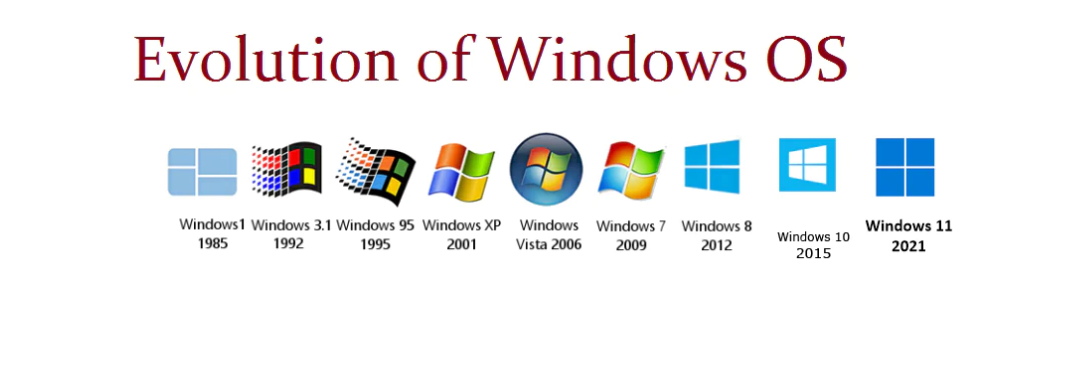At times, Excel feels almost magical. Just type in a formula, and virtually everything you used to do by hand is automated. Voila!
Need to merge or combine two sheets with similar datasets? Excel handles it.
Need to perform basic calculations? Excel manages that.
Need to combine data across multiple cells? Excel makes it simple.
Basically, there’s something and everything in Excel for you.
In this article, we'll share the best tips, tricks, and shortcuts to elevate your Excel skills immediately. You don't need expert-level Excel knowledge.
Understanding Excel
Microsoft Excel is a robust tool for data visualization and analysis. It usesspreadsheets to compile, organize, and analyze data with functions and formulas.
Excel is popular among students, educators, marketers, accountants, data analysts, and other professionals. It is a component of the Microsoft Office suite.
If you want alternatives to Microsoft Excel, you can check out our post on Top Excel alternatives, which include Truly Sheets, Google Sheets, Numbers and more.
Discover more alternatives to Excel here or see the best Dynamic Arrays alternatives.
What are Excel's uses?
Excel is adept at storing, analyzing, and presenting extensive data sets. It is commonly used by finance teams for financial analysis but is versatile enough for any professional handling large data sets. Excel uses range from creating financial statements and budgets to editorial schedules.
Excel is primarily used for crafting financial documents due to its potent calculation capabilities. It is often used within accounting departments because it offers automated insights into sums, averages, and totals, enabling accountants to interpret their business data efficiently.
While primarily known for its financial applications, Excel's functionality benefits all professionals, including marketers. It allows tracking of any data type without the hours spent manually counting or transferring data. Excel generally offers a shortcut or solution to expedite tasks.
After downloading the templates, let’s dive into using the software, starting with the basics.
Excel Fundamentals
If you're new to Excel, familiarize yourself with some essential commands, including:
- Creating a spreadsheet from scratch.
- Conducting basic arithmetic like addition, subtraction, multiplication, and division.
- Writing and formatting text and titles in columns.
- Utilizing Excel's auto-fill features.
- Adding or removing individual columns, rows, and spreadsheets. We will discuss adding multiple columns and rows later.
- Maintaining visibility of column and row headers as you scroll.
- Sorting your data alphabetically.
Let’s delve deeper into some of these fundamentals.
For instance, why is auto-fill significant?
If you know the basics of Excel, you're probably familiar with this quick feature. Nonetheless, let me demonstrate its utility. The auto-fill function lets you quickly populate adjacent cells with data, series, or formulas.
There are several methods to apply this feature, but the fill handle is one of the simplest. Select your source cells, find the fill handle at the lower-right corner, and drag it across the cells you want to fill or double-click it.Additionally, sorting is a crucial feature when organizing data in Excel.
Sometimes, your data list may be completely unsorted. For example, you might have exported a list of marketing contacts or blog entries. Whatever your scenario, Excel's sort function can alphabetize any list.
Click the column with the data you wish to sort, head to the “Data” tab on your toolbar, and locate the “Sort” option on the left. If “A” is above “Z,” click once to sort. If “Z” is above “A,” click twice. When “A” is on top, your list will sort alphabetically, and vice versa for reverse order.
Next, let’s further explore Excel's basics and more advanced features.
How to Operate Excel
To operate Excel, simply input data into the rows and columns, then use formulas and functions to transform that data into insights.
We’ll discuss essential formulas and functions shortly, but first, let’s review the types of documents you can generate using Excel. This will give you a comprehensive understanding of how Excel can be integrated into your daily tasks.
Documents You Can Create in Excel
Unsure how Excel can serve your team? Here’s a list of documents you can generate:
-
Income Statements: An Excel spreadsheet tracks a company’s sales activity and financial health.
-
Balance Sheets: Commonly created in Excel, these provide a comprehensive view of a company’s financial status.
-
Calendars: Easily create a spreadsheet calendar to monitor events or other date-sensitive information.
Here are some documents specifically useful for marketers:
-
Marketing Budgets: Excel is a powerful tool for budget management. Create and monitor marketing budgets and expenditures with Excel. For ready-made solutions, download our free marketing budget templates.
-
Marketing Reports: Without a dedicated marketing tool like Marketing Hub, you might need a dashboard for all your reports. Excel is perfect for creating comprehensive marketing reports. Download free Excel marketing reporting templates here.
-
Editorial Calendars: Excel's tab format simplifies tracking your content creation over custom time periods. Access a free editorial content calendar template here.
-
Traffic and Leads Calculator: Excel's advanced calculation capabilities make it an ideal tool for developing calculators, including tracking leads and traffic. Download a free ready-to-use lead goal calculator here.
This list is just a glimpse of the numerous marketing and business documents you can create with Excel. We have compiled an extensive list of Excel templates immediately available for use in marketing, invoicing, project management, budgeting, and more.
In the interest of efficiency and eliminating tedious, manual tasks, here are several Excel formulas and functions you should know.
Excel Formulas
You might feel overwhelmed by the many formulas available if you're new to Excel. However, the following basic formulas can perform some complex functions without complicating your learning curve.
- Equal sign: Start any formula with an equal sign (=) in the cell where you want the result to appear.
-
Addition: To sum the values in two or more cells, use the + sign. Example: =C5+D3.
-
Subtraction: To subtract values from different cells, use the - sign. Example: =C5-D3.
-
Multiplication: To multiply values from different cells, use the * sign. Example: =C5*D3.
-
Division: To divide values from different cells, use the / sign. Example: =C5/D3.
You can combine these operations in a single cell. Example: =(C5-D3)/((A5+B6)*3).
For more intricate formulas, encase expressions in parentheses to manage the order of operations properly. Remember that you can include plain numbers in your formulas.
Excel Functions
Excel functions automate tasks that you would typically handle via formulas. For example, instead of using the + sign to add up a range of cells, you'd use the SUM function. Here are a few more functions that can simplify calculations and tasks.
-
SUM: This function automatically sums a range of cells or numbers. Specify the starting and ending cells with a colon between them. Example: =SUM(C5:C30).
-
AVERAGE: This function calculates the average of a range of cells. The syntax mirrors the SUM function: AVERAGE(Cell1:Cell2). Example: =AVERAGE(C5:C30).
-
IF: This function returns values based on a logical test. The syntax is as follows: IF(logical_test, value_if_true, [value_if_false]). Example: =IF(A2>B2,"Over Budget","OK").
-
VLOOKUP: This function assists in searching for data across your sheet’s rows. The syntax includes: VLOOKUP(lookup value, table array, column number, Approximate match (TRUE) or Exact match (FALSE)). Example: =VLOOKUP([@Attorney],tbl_Attorneys,4,FALSE).
-
INDEX: This function retrieves a value from within a range. The syntax is: INDEX(array, row_num, [column_num]).
-
MATCH: This function locates a specific item in a range of cells and returns its position. It's often used together with the INDEX function. The syntax is: MATCH(lookup_value, lookup_array, [match_type]).
-
COUNTIF: This function counts the number of cells that meet a specific criterion or contain a particular value. The syntax is: COUNTIF(range, criteria). Example: =COUNTIF(A2:A5,"London").
Excel Tips
- Utilize Pivot tables to organize and interpret data.
- Add multiple rows or columns simultaneously.
- Simplify your datasets with filters.
- Eliminate duplicate data entries or sets.
- Convert rows to columns and vice versa.
- Split text data across multiple columns.
- Employ simple calculation formulas.
- Calculate the average of numeric values in cells.
- Apply conditional formatting for dynamic cell color changes based on data.
- Automate tasks with the IF Excel formula.
- Lock a cell's formula with dollar signs to prevent changes during movement.
- Retrieve data across sheets with the VLOOKUP function.
- Pull data from horizontal columns with INDEX and MATCH formulas.
- Count words or numbers in any cell range with the COUNTIF function.
- Concatenate cells using the ampersand symbol.
- Incorporate checkboxes for interactive data tracking.
- Link cells to websites with hyperlinks.
- Add drop-down menus for streamlined data entry.
- Copy formatting quickly with the format painter.
- Create and manage data with tables.
- Perform what-if analyses to simulate different scenarios.
- Name ranges for easier formula management.
- Organize your data with grouping.
- Use Find & Select for efficient formatting.
- Safeguard your work with protection features.
- Design custom number formats for unique data presentation.
- Customize the Excel ribbon for optimized workflow.
- Enhance readability with text wrapping.
- Incorporate emojis for a personalized touch.
Note: Updates have been made to accommodate users of both new and older versions.
Use Pivot tables to understand and organize data
Pivot tables are excellent for reorganizing spreadsheet data. They don't alter your data but can summarize and compare different information based on your needs.
To create a Pivot Table, go to Data > Pivot Table. In the latest version of Excel, you’d go to Insert > Pivot Table. Excel automatically sets up your Pivot Table, but you can modify the data arrangement. Then, choose from four options:
-
Report Filter: This lets you view only specific rows in your dataset. For instance, you might include only Gryffindor students to filter by house.
-
Column Labels: These serve as your dataset headers.
-
Row Labels: These could be your dataset rows. Row and Column labels can include data from your columns (e.g., First Name could be placed in either Row or Column labels depending on your data viewing preference).
-
Value: This section allows you to view your data differently. Instead of pulling any numeric value, you can sum, count, average, or perform other manipulations. By default, dragging a field to Value usually counts it.
Add multiple rows or columns
You might often need to insert additional rows or columns as you work with your data. Sometimes, you may need to add hundreds at once. Adding them one by one would be laborious. Fortunately, there’s a simpler way.
To add multiple rows or columns in a spreadsheet, highlight the same number of existing rows or columns you want to add. Right-click and select “Insert.”
In the example below, I need to add three more rows. By selecting three existing rows and clicking insert, I can quickly include three new blank rows in my spreadsheet.
Apply filters to streamline your data
You don’t need to view every row simultaneously when working with large datasets. Sometimes, you only need to see data that meet specific criteria.
That’s where filters come into play.
Filters allow you to narrow down your data to view only certain rows at a time. In Excel, you can add a filter to each column in your dataset. From there, you can select which cells you wish to see simultaneously.
Let’s consider the following example. Add a filter by selecting the Data tab and clicking "Filter." Clicking the arrow next to column headers lets you choose how you want your data organized—in ascending or descending order—and which specific rows to display.
Pro Tip: To further analyze your data, copy and paste the values in the spreadsheet while a Filter is active into a separate spreadsheet.
Remove duplicate data points or sets
Large datasets often contain duplicate information. For example, you might have multiple contacts from the same company and only want to view unique companies. In such cases, removing duplicates is extremely useful.
To eliminate duplicates, highlight the row or column where duplicates are present. Then, go to the Data tab and select “Remove Duplicates” (located under the Tools subheader in older versions of Excel). A pop-up will confirm which data you want to process. Select “Remove Duplicates,” and you’re set.
You can also use this feature to eliminate an entire row based on duplicate column values. So, if you have multiple entries for Harry Potter and only need one, select the entire dataset and remove duplicates based on email. Your list will then only show unique names without duplicates.
Convert rows into columns
If you have rows of data and decide you want to convert them into columns (or vice versa), copying and pasting each header would be time-consuming. However, the transpose feature simplifies this process.
Start by selecting the column you want to turn into rows. Right-click it, and choose “Copy.” Next, select the cells where you want your first row or column to start. Right-click on the cell, and select “Paste Special.” A module will appear—at the bottom, you'll see an option to transpose. Check that box and select OK. Your column will now be transferred to a row, or vice versa.
In newer versions of Excel, a drop-down will appear instead of a pop-up.
Excel transpose tool in newer versions
Divide text information between columns
What if you need to split information in one cell into two different cells? For example, you might want to extract a company name from an email address or separate a full name into first and last names for your email marketing templates.
Thanks to Excel, both tasks are achievable. First, highlight the column you want to split. Next, go to the Data tab and select “Text to Columns.” A module with additional options will appear.
First, decide whether you want “Delimited” or “Fixed Width.”
- “Delimited” means breaking up the column based on characters like commas, spaces, or tabs.
- “Fixed Width” means choosing the exact location across the columns where you want the split to occur.
Choose “Delimited” to separate the full name into first and last names.
Then, select your Delimiters. This could be a tab, semi-colon, comma, space, or something else. ("Something else" could be the "@" sign used in an email address, for example.) In our example, let’s choose the space. Excel will then show you how your new columns will look.
When you’re satisfied with the preview, press "Next." This page will let you select Advanced Formats if desired. When you’re ready, click “Finish.”
Use simple calculation formulas
Excel can handle both complex and simple calculations. Here’s how to perform basic arithmetic:
- To add, use the + sign.
- To subtract, use the - sign.
- To multiply, use the * sign.
- To divide, use the / sign.
You can also use parentheses to ensure certain calculations are prioritized. In the example below (10+10*10), the second and third 10s are multiplied before adding the first 10. However, if it were (10+10)*10, the first two 10s would be added first.
Calculate the average of numbers in your cells.
To find the average of a set of numbers, use the formula =AVERAGE(Cell1:Cell2). To sum a column of numbers, use the formula =SUM(Cell1:Cell2).
Apply conditional formatting for dynamic cell coloring
Conditional formatting lets you change a cell's color based on the data within. For instance, you can highlight numbers that are above average or in the top 10% of your data. This feature is also useful for visually linking commonalities between different rows in Excel. It enables you to identify important information quickly.
To begin, select the group of cells for conditional formatting. Then, choose “Conditional Formatting” from the Home menu and pick your logic from the dropdown. (You can also create a custom rule if needed.) A window will appear, prompting you to detail your formatting rule. Click “OK” when finished, and your results will automatically display.
Automate tasks with the IF Excel formula
Sometimes, you don't just want to count the number of times a value appears; you want to input different information into a cell based on another cell's data.
The formula is: IF(logical_test, value_if_true, [value_if_false])
Generally, the formula structure is IF(Logical Test, value if true, value if false). Let’s explore these components.
-
Logical_Test: This is the condition for the “IF” part of the formula. In this example, the condition is D2="n" because we want to ensure the cell corresponding with the student reads “n.” Make sure to use quotation marks around n.
-
Value_if_True: The cell should display this if the condition is true. Here, we want “10” to indicate the student was awarded the points. Use quotation marks if the result is text.
-
Value_if_False: The cell should display this if the condition is false. Here, for any student not in Gryffindor, we want “0”. Use quotation marks if the result is text.
The real strength of the IF function emerges when you nest multiple IF statements together, allowing you to set multiple conditions, get more specific results, and better organize your data.
Ranges are another way to segment your data for analysis. For instance, you can categorize data into values less than 10, 11 to 50, or 51 to 100. Here’s what that looks like in practice:
=IF(B3<11,"10 or less",IF(B3<51,"11 to 50",IF(B3<100,"51 to 100")))
It may require some trial and error, but once you master it, IF formulas will become your new best friend in Excel.
Lock cell formulas with dollar signs.
Have you noticed dollar signs in an Excel formula? These aren’t represent American dollars; instead, they ensure that the specific column and row remain constant, even if you copy the formula to adjacent rows.
Normally, a cell reference—like referring to cell A5 from cell C5—is relative by default. In this case, you’re referring to a cell five columns to the left (C minus A) and in the same row (5).
This is known as a relative formula. Copying a relative formula from one cell to another adjusts the formula values based on its new location. But sometimes, you want those values to remain unchanged, regardless of their position—and you can achieve this by converting the formula to an absolute formula.
To transform a relative formula (=A5+C5) into an absolute formula, precede the row and column values with dollar signs, like this: (=$A$5+$C$5). (Learn more on Microsoft Office's support page here.)
Retrieve data across sheets with the VLOOKUP function.
Ever had two different sets of data on separate spreadsheets that you wanted to merge into one?
For instance, you might have a list of people’s names next to their email addresses on one sheet, and a list of those same people’s email addresses next to their company names on another—but you want the names, email addresses, and company names to appear together.
I often need to combine datasets like this—and when I do, VLOOKUP is my go-to formula.
Before using the formula, ensure you have at least one column that appears identically in both datasets. Check your data to ensure the column you’re using to merge your information is exactly the same, including no extra spaces.
The formula: =VLOOKUP(lookup value, table array, column number, Approximate match (TRUE) or Exact match (FALSE))
The formula with variables from our example below: =VLOOKUP(C2,Sheet2!A:B,2,FALSE)
In this formula, several variables are involved. Here’s what’s true when you want to combine information from Sheet 1 and Sheet 2 onto Sheet 1:
-
Lookup Value: This is the identical value present in both spreadsheets. Select the first value in your first spreadsheet. In the example, this means the first email address on the list, or cell C2.
-
Table Array: The table array is the range of columns on Sheet 2 you’re pulling data from, including the column of data identical to your lookup value (in our example, email addresses) in Sheet 1 as well as the column of data you’re copying to Sheet 1. In our example, this is “Sheet2!A:B.” “A” means Column A in Sheet 2, which contains the data identical to our lookup value (email) in Sheet 1. The “B” means Column B, which has the information only available in Sheet 2 that we want to transfer to Sheet 1.
-
Column Number: This specifies which column in Sheet 2 contains the new data you want to copy to Sheet 1. In our example, this would be the column where “House” is located. “House” is the second column in our range (table array), so our column number is 2. [Note: Your range can include more than two columns. For example, if there are three columns on Sheet 2—Email, Age, and House—and you still want to bring “House” onto Sheet 1, you can still use a VLOOKUP. You just need to change the “2” to a “3” so it pulls back the value in the third column: =VLOOKUP(C2:Sheet2!A:C,3,false).]
-
Approximate Match (TRUE) or Exact Match (FALSE): Use FALSE to ensure only exact value matches are pulled. If you use TRUE, the function will pull approximate matches.
So when we input the formula =VLOOKUP(C2,Sheet2!A:B,2,FALSE), we bring all the house data into Sheet 1.
Keep in mind that VLOOKUP will only pull back values from the second sheet that are to the right of the column containing your identical data. This can be limiting, which is why some people prefer using the INDEX and MATCH functions instead.
Retrieve data from horizontal columns with INDEX and MATCH formulas.
Like VLOOKUP, the INDEX and MATCH functions pull data from another dataset into a central location. Here are the main differences:
- VLOOKUP is simpler. However, if you’re dealing with large data sets that require thousands of lookups, using INDEX and MATCH will significantly decrease Excel’s load time.
- INDEX and MATCH work right-to-left, whereas VLOOKUP only works left-to-right. If your lookup column is to the right of the results column, you’d need to rearrange those columns to use VLOOKUP, which can be tedious with large datasets and potentially lead to errors.
If I want to combine information from Sheet 1 and Sheet 2 onto Sheet 1, but the column values in Sheets 1 and 2 aren’t the same, then I’d use INDEX and MATCH instead of VLOOKUP to avoid rearranging my columns.
Let’s explore an example. Let’s say Sheet 1 contains a list of people’s names and their Hogwarts email addresses, and Sheet 2 contains a list of people’s email addresses and the Patronus associated with each student.
The email address column is in different column numbers on each sheet. I’d use the INDEX and MATCH formulas instead of VLOOKUP so I wouldn’t have to switch any columns around.
So, what’s the formula? It’s actually the MATCH formula nested inside the INDEX formula. You’ll notice I differentiated the MATCH formula using a different color here.
The formula: =INDEX(table array, MATCH formula)
This becomes: =INDEX(table array, MATCH(lookup_value, lookup_array))
The formula with variables from our example below: =INDEX(Sheet2!A:A,(MATCH(Sheet1!C:C,Sheet2!C:C,0)))
Here are the variables:
-
Table Array: The range of columns on Sheet 2 containing the new data you want to bring to Sheet 1. In our example, “A” means Column A, which contains each person's “n” information.
-
Lookup Value: This column in Sheet 1 contains identical values in both spreadsheets. The example refers to the “email” column on Sheet 1, which is Column C. So: Sheet1!C:C.
-
Lookup Array: This column in Sheet 2 contains identical values in both spreadsheets. In the example, this refers to the “email” column on Sheet 2, which also happens to be Column C. So: Sheet2!C:C.
Once you have sorted your variables, type the INDEX and MATCH formulas into the top cell of the blank Patronus column on Sheet 1, where you want the combined information to reside.
Count words or numbers in any range of cells with the COUNTIF function.
Rather than manually counting how often a specific value or number appears, let Excel handle it. With the COUNTIF function, Excel can count how many times a word or number shows up in any range of cells.
For instance, let's say I want to count the number of times the word “n” appears in my data set.
The formula: =COUNTIF(range, criteria)
The formula with variables from our example below: =COUNTIF(D:D,"n")
In this formula, there are several variables:
Range: The range you want the formula to cover. In this case, since we’re focusing on one column, we use “D:D” to indicate that both the first and last column are D. If I were examining columns C and D, I would use “C:D.”
Criteria: The number or piece of text you want Excel to count. Use quotation marks if you want the result to be text, not a number. In our example, the criteria is “n.”
Simply entering the COUNTIF formula into any cell and pressing “Enter” will display how many times the word “n” appears in the dataset.
Concatenate cells using &.
Databases often separate data to make it as precise as possible. For example, instead of having a column that shows a person’s full name, a database might separate it into first and last names in different columns. Or, it might divide a person’s location by city, state, and zip code. In Excel, you can combine cells with different data into one cell using your function's “&” sign.
The formula with variables from our example below: =A2&" "&B2
Let’s walk through the formula together using an example. Suppose we combine first and last names into full names in a single column. We’d first place our cursor in the blank cell where we want the full name to appear. Next, we'd highlight a cell containing a first name, type in an “&” sign, and then highlight a cell with the corresponding last name.
But you’re not done—if all you type in is =A2&B2, there will be no space between the person’s first and last names. To add the necessary space, use the function =A2&" "&B2. The quotation marks around the space instruct Excel to insert a space between the first and last names.
To apply this to multiple rows, drag the corner of that first cell downward, as shown in the example.
Add checkboxes.
If you’re using an Excel sheet to track customer data and need to monitor something non-quantifiable, you could insert checkboxes into a column.
For example, if you’re managing sales prospects in an Excel sheet and want to track whether you contacted them in the last quarter, you could have a "Called this quarter?" column and check off the cells when you’ve contacted the respective client.
Here’s how to do it.
Highlight the cell where you’d like to add checkboxes in your spreadsheet. Then, click DEVELOPER. Under FORM CONTROLS, click the checkbox or the selection circle in the image below.
Once the box appears in the cell, copy it, highlight the cells where you want it to appear, and then paste it.
Link cells to websites with hyperlinks
If you’re using your sheet to track social media or website metrics, having a reference column with links for each row can be helpful. If you add a URL directly into Excel, it should automatically become clickable. However, if you need to hyperlink words like a page title or the headline of a post you’re tracking, here’s how.
Highlight the words you want to hyperlink, then press Shift K. A box will pop up allowing you to enter the hyperlink URL. Copy and paste the URL into this box and hit or click Enter.
If the key shortcut isn't working for any reason, you can do this manually by highlighting the cell and clicking Insert > Hyperlink.
Add drop-down menus.
Sometimes, you’ll use your spreadsheet to track processes or other qualitative data. Rather than repeatedly typing words into your sheet, such as "Yes", "No", "Customer Stage", "Sales Lead", or "Prospect", you can use dropdown menus for quick, consistent data entry.
Here’s how to add drop-downs to your cells.
Highlight the cells where you want the drop-downs, then click the Data menu in the top navigation and press Validation.
From there, a Data Validation Settings box will open. Look at the Allow options, then click Lists and select Drop-down List. Check the In-Cell dropdown button, then press OK.
Copy formatting quickly with the format painter
As you’ve probably noticed, Excel offers many features to expedite number crunching and data analysis. However, if you’ve spent time formatting a sheet to your liking, you know it can become tedious.
Don’t waste time repeating the same formatting commands. Use the format painter to easily copy formatting from one worksheet area to another. To do so, choose the cell whose formatting you’d like to replicate, then select the format painter option (paintbrush icon) from the top toolbar.
Create and manage data with tables
Converting your data into a table makes it visually appealing and enhances data management and analysis capabilities.
To begin, select the range of cells you want to convert into a table. Then, go to the Home tab in the Excel ribbon. In the Styles group, click on the Format as Table button—it looks like a grid of cells. Choose a table style from the available options, or customize a table if desired.
In the Create Table dialog box, ensure the selected range is correct. If Excel did not automatically detect the range accurately, you can adjust it manually. If your table includes headers (column names), check the “My table has headers” option. This allows Excel to treat the first row as the header row.
Once everything is set, click the OK button, and Excel will convert your selected data into a table.
After your data is converted into a table, you’ll notice some additional features and functionalities become available:
- The table is automatically assigned a name, such as “Table1” or “
- Filter drop-down arrows appear in the header row, allowing you to filter data within the table easily.
- The table is formatted with alternating row colors, making it visually appealing.
- Total rows are automatically added at the bottom of each column, allowing you to perform calculations like sum, average, etc., for the data in that column.
Use tables to conduct what-if analyses.
In addition to making your data more organized, tables can help you conduct what-if analyses. This allows you to test various combinations of input values and observe the resulting outcomes.
A what-if analysis can be beneficial in decision-making, planning, forecasting, financial modeling, sensitivity analysis, resource planning, and more.
You’ll need to set up your worksheet with the necessary formulas and variables you want to analyze to get started. Then, determine the input values that you want to vary. Typically, you will choose one or two input variables.
Select the cell where you want to display the results of your what-if analysis. Then, click the What-If Analysis button to the Data tab in the Excel ribbon. From the dropdown menu, select Data Table.
In the Table Input dialog box, enter the input values you want to test for each variable. Enter the input values in a column or row if you have one variable. If you have two variables, enter the combinations in a table format.
Select the cells in the table area corresponding to the formula cell you want to analyze. This cell will display the results for each combination of input values.
Click OK to generate the data table. Excel will calculate the formula for each combination of input values and display the results in the selected cells. The data table acts as a grid, showing the various scenarios and their corresponding outcomes.
Once your table is created, you can use it to identify trends, patterns, or specific values of interest. Play around with the input values and see how it may affect the final results.
Make formulas easier to comprehend with named ranges.
Instead of referring to a range of cells by its coordinates (e.g., A1:B10), you can assign a name. This makes formulas more readable and easier to manage.
To get started, select the cell or range you want to name. Go to the Formulas tab in the Excel ribbon and click the Define Name button in the Defined Names group. Alternatively, you can use the keyboard shortcut Alt + M + N + D.
In the New Name dialog box, enter a name for the selected cell or range in the Name field. Make sure the name is descriptive and easy to remember. By default, Excel assigns the selected cell or range's reference to the Refers to field in the dialog box. You can modify the reference to include additional cells or adjust the range if needed.
Click the OK button to save the named range. Once you've named a range, you can use it in your formulas by simply typing the name instead of the cell reference. For example, if you named cell A1 as “Revenue,” you could use =Revenue instead of =A1 in your formulas.
Using named ranges offers several benefits:
-
Improved formula readability: Named ranges make formulas easier to understand and navigate, especially in complex calculations or large datasets.
-
Flexibility for range adjustments: If your dataset changes, you can easily modify the range assigned to a named range without updating each formula that references it.
-
Enhanced collaboration: Named ranges make it easier to collaborate with others, as they can understand the purpose of a named range and use it in their own calculations.
-
Simplified data analysis: When using named ranges, you can create more intuitive data analysis by referring to named ranges in functions like SUM, AVERAGE, COUNTIF, etc.
To manage named ranges, you can go to the Formulas tab, click on the Name Manager button in the Defined Names group. The Name Manager offers functionalities to modify, delete, or review existing named ranges.
Organize your data with grouping
Grouping data in Excel allows you to organize, analyze, and present information more effectively, making it easier to identify patterns, trends, and insights within your data. For instance, if you have a list of leads generated, you can group the data by month to create a monthly performance report.
Grouping data makes navigating and working with large data sets easier. It helps in organization and reduces clutter by collapsing the groups that are not immediately needed.
To group data in Excel, select the range of cells or columns you want to group. If necessary, sort the data properly.
Click on the Group button on the Data tab in the Excel ribbon. It is usually found in the Outline or Data Tools group.
You can specify the grouping levels by choosing options like Rows or Columns. For example, you can select Months if you want to group data by month. You can also set additional options such as Summary rows below detail or Collapse the outline to the summary levels. These options affect how the grouped data is displayed.
Once you have selected the options, click on the OK button, and Excel will group the selected data based on your settings.
After your data is grouped, you will see a plus (+) or minus (-) button next to the grouped rows or columns. Clicking on the plus button expands the group to show the individual records, and clicking on the minus button collapses the group to hide the details.
Streamline formatting with Find & Select
Why format and clean up your spreadsheet manually when you can do it in just a few clicks? Using the Find & Select tool can help you maintain document accuracy and consistency.
To start, open the Excel worksheet containing the data you want to search. Press the Ctrl + F keys on your keyboard or go to the Home tab and click the Find & Select drop-down menu. Then, select Find from the menu. The Find and Replace dialog box will open.
In the Find field, enter the specific data you want to find. Then, you can choose the appropriate options in the dialog box to narrow down your search to specific cells, rows, columns, or formulas.
Click on the Find Next button to search for the first occurrence of the data. Excel will highlight the cell containing the data.
To replace the found data with new information, click the Replace button in the dialog box. This will replace the highlighted occurrence with the data you enter in the Replace field.
To replace all occurrences of the data at once, click on the Replace All button. You can close the dialog box once you have finished finding and replacing it.
Note: Be cautious when using the Replace All feature, as it replaces all occurrences without confirmation. Review each replacement carefully before using the Replace All option is always a good practice.
Protect your work
Protecting your work in Excel is essential for data security, maintaining data integrity, preserving intellectual property, and complying with legal or regulatory requirements. It allows you to control who can access and modify your work, minimizing risks and maintaining the quality and confidentiality of your data.
Here are a couple ways you can protect your work:
Protect a Worksheet
- Open your Excel worksheet and navigate to the Review tab.
- Click on the Manage Protection button in the Protection group.
- A Manage Protection dialog box will appear. There, you can select whether or not you want to protect the sheet. Set a password if desired and choose the options you want to apply, such as preventing users from making cell changes, formatting, inserting/deleting columns or rows, etc.
Protecting a Workbook
- Open your Excel workbook and navigate to the File tab.
- Click on Info and select Protect Workbook from the options.
- Choose Encrypt with Password and enter a password if desired.
- Click OK to protect the workbook.
Taking these extra steps ensures your work is protected. Just make sure to keep your passwords safe and secure.
26. Create custom number formats.
To display data in unique ways, use custom number formats. Doing this can help with data presentation, clarity, consistency, localization, and masking sensitive data.
To get started, select the cell or range you want to format. Right-click on the selected cells and choose Number Format from the context menu. Then, find the Category list and select Custom.
In the Type field, you can enter a custom number format code to define your desired format. Here are some examples of custom number formats:
To display numbers with a specific number of decimal places, use the 0 or # symbol to represent a digit, and a zero or hashtag without a decimal point to represent optional digits. For example, 0.00 will display two decimal places, 0.### will display up to three decimal places, and ### will display no decimal places.
To display a specific text or character alongside numbers, use the @ symbol. For example, $0 will display a dollar sign before the number.
To display percentages, use the % symbol. For example, 0% will display the number as a percentage.
To create custom date or time formats, use codes such as dd for day, mm for month, yy for two-digit year, hh for hours, mm for minutes, and ss for seconds. For example, dd/mm/yyyy will display the date in the format of day/month/year.
As you enter your custom number format in the Type field, you will see a Sample section showing how the format will be applied. Click OK to apply the custom number format to the selected cells.
27. Customize the Excel ribbon.
Although the Excel ribbon already contains various tools used to execute common functions and commands, you can customize it to fit your specific needs and preferences.
This can help streamline your workflow and make commonly used commands more easily accessible. It also allows you to remove unnecessary elements you don’t use, making navigating and finding the tools you need easier.
To make customizations, start by right-clicking on an empty area of the ribbon and selecting Customize the Ribbon. In the Excel Options window that appears, you'll see two sections. The left section displays the tabs currently visible in the ribbon, while the right section displays the tabs you can add.
To customize the ribbon, you have several options:
- To add a new tab, click on New Tab in the right section and give it a name.
- To add a group within an existing tab, select the tab in the left section, click New Group in the right section, and name it.
- To add commands to a group, select the group in the right section, choose commands from the left section, and click Add. You can also customize the order of the commands using the Up and Down buttons.
You can also remove tabs, groups, or commands from the ribbon. In the left section, select the item you want to remove and click Remove.
To change the order of tabs and groups, select the item in the left section and use the Up and Down buttons to rearrange them.
Click OK in the Excel Options window to save your changes and apply the customized ribbon.
To enhance Excel's capabilities further, you can personalize the ribbon by adding more apps through the 'Add-ins' button on the Home tab.
Note that customizing the ribbon only affects your personal Excel setup and does not impact the ribbons of other users.
28. Enhance the visual appeal with text wrapping.
Although spreadsheets may not be visually exciting, wrapping text can make them more readable by allowing multiple lines of text within a single cell. This is particularly useful for adding line breaks or dividing lengthy text into paragraphs within a cell without enlarging the row height.
To wrap text, select the cell(s) containing the text. Go to the top toolbar in Excel, find the 'Wrap Text' button (marked by an icon with an angled arrow) in the Alignment section, and click it.
29. Incorporate emojis
To insert an emoji, click on the cell, then activate the emoji keyboard, which varies by operating system:
-
Windows: Use the shortcut Win + . or Win + ;
-
macOS: Use Ctrl + Cmd + Space.
Browse and select your desired emoji to have it displayed in the cell.
Emojis may initially appear small in Excel cells. You can increase their size by adjusting the row height and column width. Alternatively, you can copy and paste emojis from the Internet or other applications directly into Excel cells.
Note: The ability to use emojis in Excel varies with the software version and device. Some older versions or systems might not support or display emojis correctly, so compatibility checks are important.
Excel Keyboard Shortcuts:
-
Create a new workbook: PC: Ctrl-N | Mac: Command-N
-
Select an entire row: PC: Shift-Space | Mac: Shift-Space
-
Select an entire column: PC: Ctrl-Space | Mac: Control-Space
-
Select the rest of a column: PC: Ctrl-Shift-Down/Up | Mac: Command-Shift-Down/Up
-
Select the rest of a row: PC: Ctrl-Shift-Right/Left | Mac: Command-Shift-Right/Left
-
Add a hyperlink: PC: Ctrl-K | Mac: Command-K
-
Open the Format Cells window: PC: Ctrl-1 | Mac: Command-1
-
Autosum selected cells: PC: Alt-= | Mac: Command-Shift-T
Final Thoughts
Excel often feels like a magical tool, effortlessly automating tasks with just a formula. Whether merging sheets, performing calculations, or consolidating data, Excel simplifies complex tasks, making it indispensable for finance professionals and beyond.
Now that you're equipped with these top tips, tricks, and shortcuts, you can elevate your Excel skills immediately, even without expert-level knowledge. Dive into these features to streamline tasks, enhance data presentations, and ensure efficiency.
Ready to transform your spreadsheets? Start implementing these strategies today and witness a significant boost in your productivity.
Keep Learning
» Excel Tutorial for Beginners: Tips You Need to Know
» 13 Tips To Master Excel Without Breaking a Sweat
» Essential Excel Skills for All Levels
» 14 Excel Tricks That Will Impress Your Boss
» 13 Excel Tips and Tricks to Make You Into a Pro
]]>



























































 6. MAX/MIN
6. MAX/MIN
 7. COUNT/COUNTA
7. COUNT/COUNTA
 8. SUMIF/SUMIFS
8. SUMIF/SUMIFS
 9. INDEX/MATCH
9. INDEX/MATCH
 10. PMT
10. PMT







